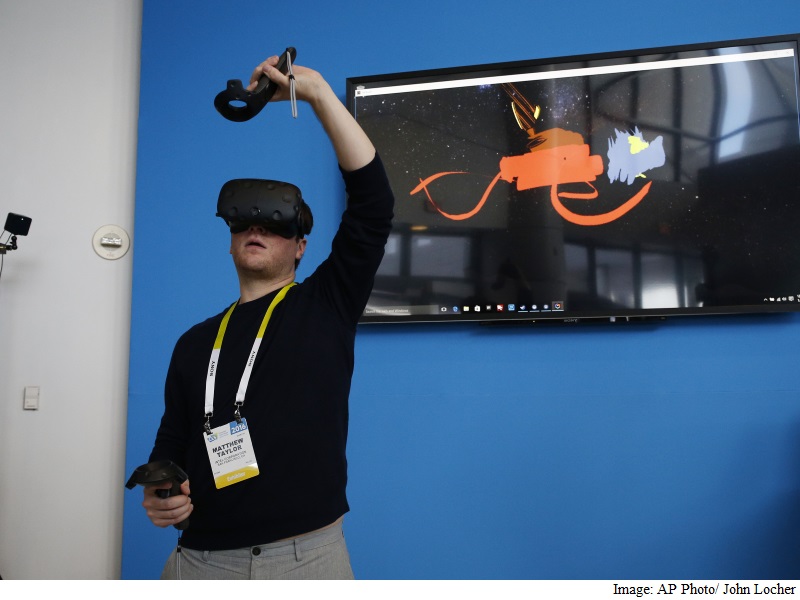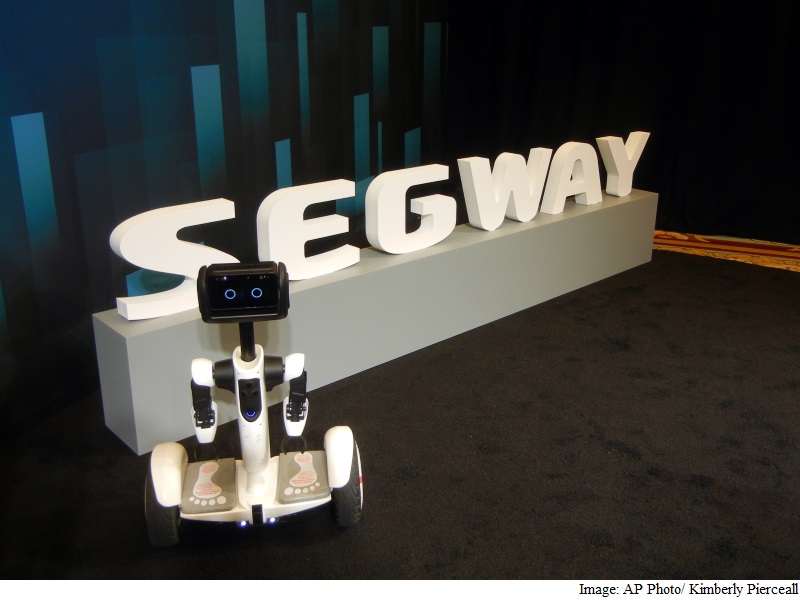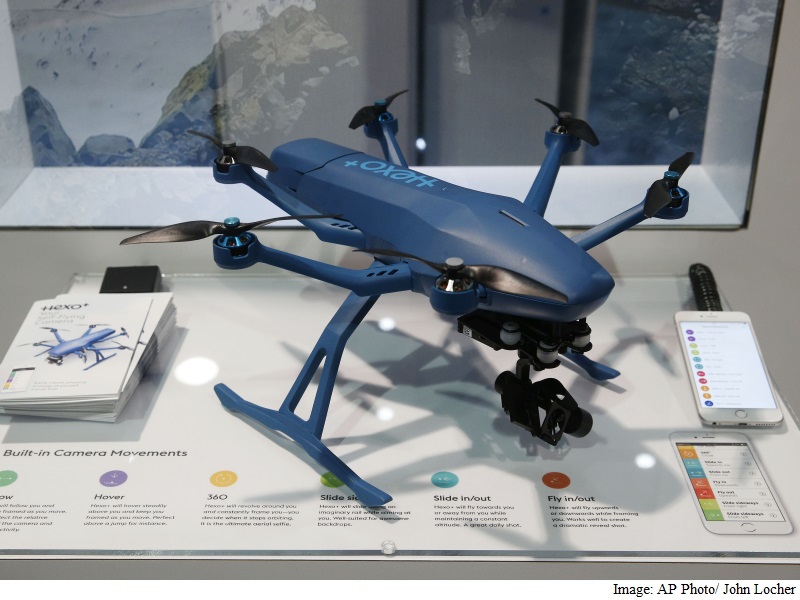This year's CES gadget show, like ones before it, showed off a mix of
the dreamy and the practical in technology. Gadget prototypes promised
us fully autonomous vehicles carrying commuters on the streets and in
the sky, while gizmos went on sale that aimed to solve daily problems
like restocking your fridge.
Here's a quick summary of the highlights of CES 2016:
Drones
Drones
might no longer be just a toy for hobbyists or weapons for the
military. Chinese drone maker Ehang Inc. unveiled what it called the
world's first drone capable of carrying a human passenger, a four-armed
quadcopter with eight propellers that it said has been on more than 100
test flights, including some with a human passenger.
The idea is
to set a course and then sit back for about a 20-minute ride - assuming,
of course, that regulators approve, which will probably be a long haul
itself.
(Also see: Intel Buys Drone Maker Ascending Technologies)
Companies are making drones smaller and smarter than ever
for that high-tech selfie. Many can hover and shoot up to 4K video, and
several companies are working toward including a "follow me" function
that would let drones fly along above or behind you, shooting video all
the way. Some such drones are so small they fall under the minimum
weight requiring registration by the Federal Aviation Administration.
Connected cars
Automakers
and parts suppliers took further steps to make autonomous driving a
reality. Quanergy, for instance, announced a low-cost version of
laser-based sensors called Lidar that cuts the cost of outfitting autos
with the technology to around $1,000 per car from about $70,000.
(Also see: CES 2016: Ford Teams With Amazon to Connect Homes With Cars)
Israeli
company Mobileye and German company Here announced plans to start
making super-detailed road maps based on cameras and sensors that exist
in cars today. Those maps will help autonomous vehicles navigate in poor
weather. Owned by Audi, BMW and Mercedes, Here said it plans to have
detailed maps of the highway networks in North America and Western
Europe by 2018.

Virtual and augmented reality
Some companies
showed off technology that combined augmented reality - which
superimposes digital images and text on the real world - and virtual
reality - which blocks out the real world in a completely immersive
environment using a headset and headphones.
HTC says it's
launching the latest version of its Vive headset with a front-facing
camera that allows users to do real-life things like take a drink or sit
down without taking it off. A startup called uSens showed off a
prototype headset attached to a Samsung Galaxy S6 smartphone that had
forward-facing infrared and optical cameras so wearers could use their
hands to manipulate virtual objects.

(Also see: CES 2016 Awash With Altered Realities)
Google and Lenovo announced a
consumer mobile device would go on sale this summer that incorporates
technology from its depth-sensing Project Tango robotic sight
technology. That could make it easy to do things like get turn-by-turn
directions indoors or measure dimensions in a room just by using the
device's cameras.
But the biggest news was the sticker-shock of
Oculus' consumer version of its Rift headset, which the company priced
at $599 (roughly Rs. 40,000) - or $1,499 (roughly Rs. 1,00,330) with the high-powered computer necessary to make it
work. Facebook-owned Oculus began taking orders Wednesday for delivery
starting at the end of March.
Smart home
More intelligent
home appliances that can tell people how well they're sleeping, order
more dishwasher detergent and know how much ketchup is likely left in
the bottle were among the gadgets on display at CES.

Segway, the
maker of the two-wheel transporters popular with city tour guide
companies, hopes that by next year people might add a personal robot to
their homes to carry the groceries home.
That's if the milk,
butter and bread weren't already ordered and delivered with a touch of a
button on a fridge door, a technology unveiled by Samsung and
Mastercard.
Kids
Companies are hoping new parents in the
not-so distant future won't just want to share photos of their new
arrival with Grandma. They might also want to presage that with a clip
of the baby's heartbeat, while still in the womb.
Familial bonding now comes with plenty of Bluetooth.
The
newest baby monitors on display this week come equipped with smile
detection, in the case of Motorola, or senses and records the baby's
breathing with First Alert's One Link system.
Most if not all are
sold as consumer devices, steering clear of any medical claims requiring
FDA approval. That includes a $250 sock equipped with a pulse oximetry
device from Owlet. It can keep tabs on the child's breathing and
heartbeat with the aim of alerting parents via their smart phones if
either seems irregular.
TVs
TV makers like Samsung, LG,
Sony, Hisense and TCL touted a new standard for screens called HDR, or
high dynamic range, which show images with higher contrast and more
vivid colors. The new tech creates another chicken-and-egg problem for
the TV industry, as only a handful of movies and TV shows have been
reissued in a format that takes advantage of HDR.
(Also see: LG's New 4K Oled TV at CES 2016 Wants to Tick All the Boxes)
There are also
disparate standards that might end up confusing consumers; some flavors
of HDR are branded "premium" while others only processed HDR signals but
don't relay all the benefits to the screen.
For the latest tech news and reviews, follow Gadgets 360 on X, Facebook, WhatsApp, Threads and Google News. For the latest videos on gadgets and tech, subscribe to our YouTube channel. If you want to know everything about top influencers, follow our in-house Who'sThat360 on Instagram and YouTube.
Further reading:
CES,
CES 2016,
Drones,
Google,
HTC,
HTC Vive,
Home Entertainment,
Internet,
LCD,
LED,
Lenovo,
MasterCard,
Oculus,
Oculus Rift,
Project Tango,
Samsung,
Segway,
Self Driving Cars,
Sony,
VR,
Virtual Reality,
Wearables
 OnePlus Nord CE 5 Leaked Renders Suggest Rear Panel Design and Camera Layout16 April 2025
OnePlus Nord CE 5 Leaked Renders Suggest Rear Panel Design and Camera Layout16 April 2025 OnePlus Nord CE 5 Specifications Leaked; Said to Offer MediaTek Dimensity 8350 Chipset15 April 2025
OnePlus Nord CE 5 Specifications Leaked; Said to Offer MediaTek Dimensity 8350 Chipset15 April 2025 OnePlus Nord CE 5 May Launch Soon; Tipped to Pack Bigger Battery Than Nord CE 414 April 2025
OnePlus Nord CE 5 May Launch Soon; Tipped to Pack Bigger Battery Than Nord CE 414 April 2025 Nvidia GeForce RTX 5090 GPU Benchmarks Reveal Up to 46 Percent Performance Improvement: Report24 January 2025
Nvidia GeForce RTX 5090 GPU Benchmarks Reveal Up to 46 Percent Performance Improvement: Report24 January 2025 VLC Media Player Showcases AI-Powered Subtitle Generation, Translation Feature at CES 202513 January 2025
VLC Media Player Showcases AI-Powered Subtitle Generation, Translation Feature at CES 202513 January 2025
![Gadgets 360 With Technical Guruji: News of the Week [April 26, 2024]](https://c.ndtvimg.com/2025-04/5ucuv89c_news-of-the-week_160x120_26_April_25.jpg?downsize=180:*)














